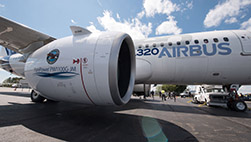by Andrew Drwiega

The volume of ‘big data’ that is increasingly flowing from the engines of commercial operators should result in less maintenance and increased profits. We talked to Pratt & Whitney’s Asia aftermarket director Kevin Kirkpatrick
When the public think about commercial aviation development, they envisage cleaner lines, better features to enhance their travelling experience and generally accept the messages that engine development may help them get to their destination more efficiently and perhaps at less cost (although today this is linked to the lower price of oil).
What is not so well understood is that engine development is moving to a completely new and higher level of complexity than ever before. Boosted by the awe inspiring ambition to develop ‘big data’ analysis, engine manufacturers are changing their position regarding how they can support their customers in this new data rich world.
“Aircraft now have a tremendous amount of data,” said Jonathan Berger, vice president, ICF International, addressing delegates on the first day of the MRO Europe conference and exhibition (18-20 October), at the RAI centre in Amsterdam, the Netherlands. “Transmittable data from a Boeing 777 has been around one megabyte; transmittable data from a Boeing 787 is around 28 megabytes.”
But what is really meant by this increasingly ubiquitous term, ‘big data’? Generally it is characterised by portions of data so large that tradition data processing techniques cannot keep up and analyse the volume that is being received. It refers to the whole processing chain from capture, to search, storing, transferring and analysing what you have on a continuous basis.
Where this becomes very relevant to the engine manufacturers and MRO providers looking after commercial aviation engine customers, is how the data can be used in predictive analysis
to improve the lifetime maintenance program for each engine type, from customer to customer.
That is not to say that the data for one engine may be applicable to all customers in the same way. Aircraft that are operated by different airlines that continually take-off and land
in geographically dissimilar locations, from the dry conditions of the Middle East to those flying in more temperate climates, and likely to see a change in data during peak performance.
OEM perspective
“When we look at big data we see that the parameters we are going to pull off this engine will be significant. That will help us understand trends about how that engine is performing and it can allow us to be more predictive and plan better for maintenance,” said Kevin Kirkpatrick executive director, aftermarket operations, for Pratt & Whitney (P&W) in Singapore.